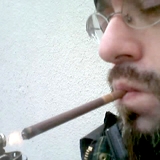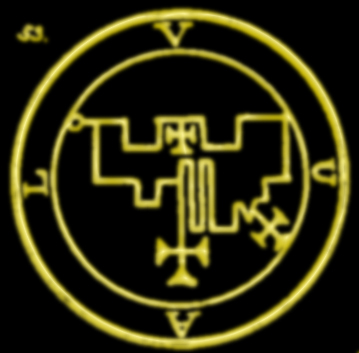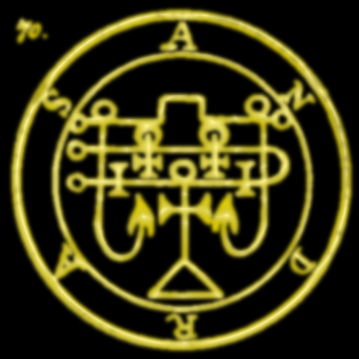This One Time, 28
This one time I got a pretty strange email from a woman I’ve never met, a woman in a different country, asking if she could meet me for a drink sometime. Usually this means spam, but there were a couple of reasons I didn’t throw it out. First, there wasn’t a link to some site where I could supposedly see pictures and video and, incidentally, download the latest suite of viruses. Second, it was emailed from the address of a research scientist from a reputable Italian university. She mentioned that she would be in town for a mathematics conference hosted by my own university, mostly as a pretense to talk to me, if I was available. And her department had already bought her tickets.
My own research was low-temperature physics. Applied maths were a part of my daily routine, but I couldn’t see immediately where she would have any interest in my work. I published pretty frequently, but even I had trouble working up any enthusiasm for my projects. We had one of the best low-temperature facilities in the world — but frankly that just meant we spent a lot of time trying to replicate whatever the really sharp guys and gals across the globe thought they found in their crappier facilities. My name was on maybe several hundred publications, either confirming or failing to confirm other people’s discoveries. The only cleverness I routinely exhibited was in reusing and calibrating the apparati we used in our thousands of expensive repetitions of thousands of other researchers’ experiments. And riding herd on my teams of student assistants who might not have the same deep grasp of how much easier the math is when the error terms are as small as possible.
The possibility that she was interested in me as a person never really crossed my mind. And thank God for that. I would have been in for a hell of a let-down. I did some minimal stalking to see what I might be getting into, to check her field of expertise and reputation, and nothing set off any alarms. She was attractive enough, though a little on the young side. Her reputation was spotless. Her papers were all business, though she had a flair for graphs and visuals that many of my colleagues would kill for. Graphics are critical in my field — not to make the math understandable to one another, though they do indeed help. Good graphics make projects more understandable to people who say yes or no on funding, however, and more than one project has undeservedly sat on the shelves forever because of stick-figure art.
I wrote her back and said I would be silly to turn down a free drink from anyone, anywhere. I kept the tone good-natured and humble, though I’m sure she could tell, even if English was not her first language, that I was curious as hell why she wanted anything to do with me. I hinted that I knew her university didn’t have a low-temperature facility, but that didn’t mean she didn’t have friends elsewhere that did who could use a favor, equipment-wise, from me, and that I was open to such maneuvers and a cheap buy.
The email she sent back was, again, all business, and made profligate use of the words “Bose-Einstein condensates,” “rubidium,” “entanglement,” and other such stuff with which I am on quite intimate terms, but that typically cause the eyes of the uninterested to glaze over. Then she went into a sentence or two regarding patterns in the error terms of a certain set of six thousand or so experiments replicated with equipment manufactured by my team and operating with calibration data we supplied.
She revealed that she herself worked with software designed to look for patterns in error terms, in the noise that scientists were forever trying to filter out and minimize. The applications were endless, from analyzing how the human brain makes us see faces in random patterns to vetting the data collected by research of any kind to see if it had been fudged or tampered with. And the unlikeliest end of the spectrum it could be used to determine systematic errors in data collection that could make the measurement-taking process more accurate. But that was the end she knew I would be most interested in. And she said her team had found something they wanted to show me.
And this email had an attachment. They had nailed on known GPS coordinates and timestamps to the data collected from the identical and tightly calibrated canisters we shipped all over the globe, and she said that her software found an interesting shape in the size and direction of the error terms collected in the six thousand repetitions mentioned previously. And for a hint, she sent me several views of a three-dimensional open-ended epicycloid-looking thing, including an animated bit that showed the rotations of the curve. Bizarre as it may seem, something about it seemed familiar. She mentioned that her software had a tendency itself to see “faces on Mars” from time to time, but the confidence of the first-pass analysis was better than 95%.
In physics, we like to see a confidence term higher than that. Ninety-five percent confidence means a 1-in-20 chance of it just being noise. Anyway, she said her team was still cranking on it, and she would have something better to show me when she showed up in a week.
At this point I had dismissed it all. I’ve done enough linear regressions myself, by hand and with software, and found more than plenty of my own share of faces on Mars. I couldn’t even imagine how forty different labs worldwide could be salting the data to produce this kind of artifact, or what it could possibly represent if the curve she sent me had any meaning at all.
But hey, free beer.
The first day of the conference arrived and I made damn sure my afternoon was clear. Around 4 PM I headed to The Hole, a dive just off the corner of campus that features brew college students could afford and staked out a table. As soon as I was settled I looked around — and noticed she was already there, with her own table and an old-school notebook with a huge screen, perfect for small presentations.
I don’t know how to describe her. Pale hair, jeans, some kind of pale blue sweater-thing that brought the term “twinset” to mind but I admit I have no idea what I’m talking about. It was hard to see anything in the light of the screen and the fire in her eyes. Her pale green eyes looked like she’d been drinking for hours, if not days, but everything else seemed normal. Well, excited. Excited in a way that it seems Italians are more comfortable with than most other people, but there you go.
She half popped out of her chair to shake my hand when I showed up — had no trouble recognizing me, so I guess she stalked me online too — and then dragged me down into a chair next to her. “Watch, watch, watch!” she directed.
There was the curve she sent me. She rotated it along all three axes with keystrokes on the massive notebook’s number pad. “See?”
“I see,” I said. “I see a fifth- or sixth-order three-dimensional epicycloid thingy that would make a hell of a design for a rollercoaster.”
She laughed and poured me a pint from a pitcher on the table. The table was a bit wobbly and I worried for the health of her computer. She ignored it.
“What do you think our software was designed for, mostly?” she asked. “Guess.”
I shrugged and took a long sip. She bounced up and down, obviously serious about me having to make a guess.
“Analyzing particle tracks in cloud chambers and cryodetectors?” I looked at the revolving epicycloid thingy.
She raised her eyebrows and pursed her lips. “Ooh, good guess! Right shapes, but wrong scope. Wrong scale!”
I smiled and asked her to elaborate with my free hand. She sighed, sensing I was done guessing. “Astrometrics. Analyzing wobbles to look for unseen companions. Planets, brown dwarfs, dark matter. But Fermilab, CERN, LHC — they all love our code. It undraws all their pretty pictures and gives them boring old straight lines — the straight lines that mean .999 correlations. Discoveries.”
She took a healthy pull from her own glass.
“Your rollercoaster — you’re on it. Let’s look at your own curve, and pull out ….” She tapped at some keys, and at every step the curve got simpler. “…rotation. Neutation. The moon’s tidal influence. Revolution. Earth’s orbit around the sun. The sun’s motion within the local cluster….”
The line also got fuzzier as it got straighter. I was starting to see the individual points which composed it.
“One final thing: relativistic effects from the influence of various gravitic centroids. Earth-moon, sun….”
And the line firmed up again. At the bottom right-hand corner of the screen, a confidence value: 99.95%.
She bounced up and down again, which was apparently a way to beg for a response of some kind from me. Stunned and uncomprehending was the best I could give her.
“This is from the data from my instruments?” I asked. “Are you absolutely sure?”
She relaxed and took another drink. “Oh yes. From your error terms, plotted by longitude and latitude and time. We ran it through every form of analysis we have coded to look for, and this one, this astrometric sidereal plot, this was where we got a hit. Judging from this, your instruments are around a million times more accurate than you think — as long as you take into account the sidereal position of a moving point in space, moving at close to the speed of light that, at the beginning of this series of repetitions, was about ten light years away, gravitationally bound to the movement of our local cluster.”
I boggled. It’s a legitimate verb. Look it up.
“Only now it’s less than two light years away. And still headed this way.”
“What is it?” I asked.
She shrugged and took a sip. “We got telescope time in lots of different places, radio to X-ray. We told the pros where to look in old data already collected. Couldn’t see it. We only see this in your data. And, somewhat more fuzzily, in error terms in other data sets from other low-temperature experiments. More work on condensates, usually. But hey, your equipment, your calibration data is the best! But we don’t know what it is. Or even if it’s a thing. We’re tracking the centroid of a phenomenon in time and space. That’s all we know.”
“The implications,…” I stuttered. “Heisenberg….”
“Screw Heisenberg,” she said. “If our paper passes peer review, and it will, we publish. This centroid, this phenomenon, we’re naming it after you.” She slapped me on the back. “Drink up! Congratulations! You’re a father!”
I drained my glass.
“Besides,” she added, taking another long pull herself, “we’ll see it close enough in a couple of years. Collision course.”
[*]
No related posts.
Comments
Leave a Reply
Categories
Archives
- January 2018
- January 2016
- June 2015
- May 2014
- January 2014
- October 2013
- June 2013
- April 2013
- March 2013
- February 2013
- November 2012
- October 2012
- September 2012
- August 2012
- July 2012
- June 2012
- May 2012
- April 2012
- March 2012
- February 2012
- January 2012
- December 2011
- November 2011
- October 2011
- September 2011
- August 2011
- July 2011
- June 2011
- May 2011
- April 2011
- March 2011
- February 2011
- January 2011
- December 2010
- November 2010
- October 2010
- September 2010
- August 2010
- July 2010
- June 2010
- May 2010
- April 2010
- March 2010
- February 2010
- January 2010
- December 2009
- November 2009
- October 2009
- September 2009
- August 2009
- July 2009
- May 2009
- March 2009
- February 2009
- December 2008
- November 2008
- October 2008
- September 2008
- August 2008
- July 2008
- June 2008
- May 2008
- April 2008
- March 2008
- February 2008
- January 2008
- December 2007
- November 2007
- October 2007
- September 2007
- August 2007
- July 2007
- June 2007
- May 2007
- April 2007
- March 2007
- February 2007
- January 2007
- October 2006
- September 2006
- July 2006
- June 2006
- May 2006
- April 2006
- March 2006
This One Time
-
This One Time, 25
This one time I was at a rock concert with my boyfriend of the hour. I wasn’t really into the band, but it was an excuse to spend an hour or two dressing up and making every effort to look hot in front of everyone who might be watching, and it’s not like there was […]
-
This One Time, 25
-
Recent Posts
Recent Comments
- Saia on The Little Gift Shop in the Vestibule of Hell
- Saia on The Little Gift Shop in the Vestibule of Hell
- Davelifestyle on Out in the Yard
- Davelifestyle on About
- xalieri on More Than Seven Things
Access
Station Identification

 Photoblog at Moblog.net
Photoblog at Moblog.net@xalieri
My Tweets





